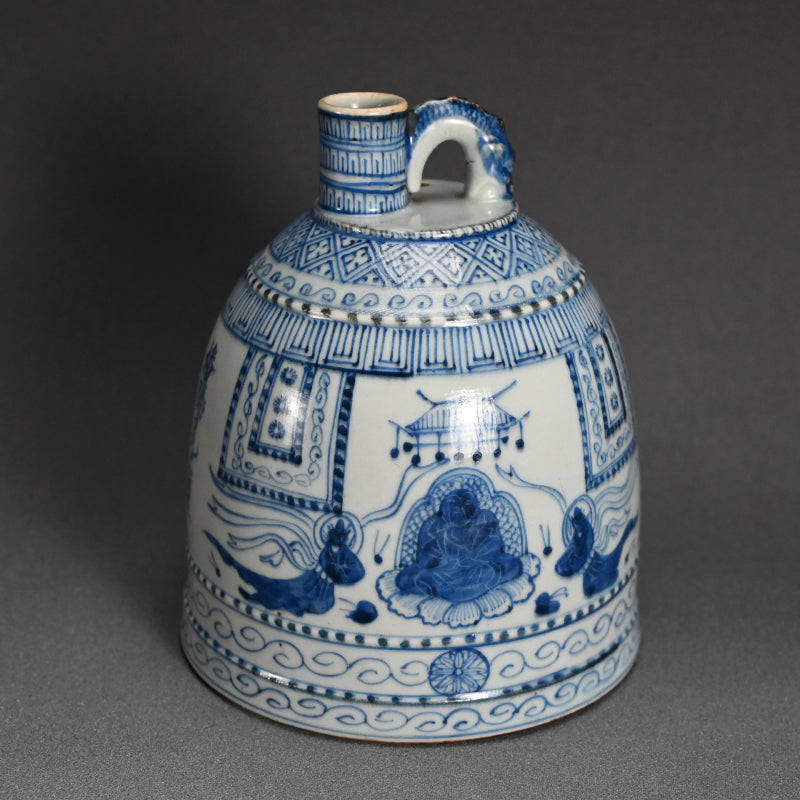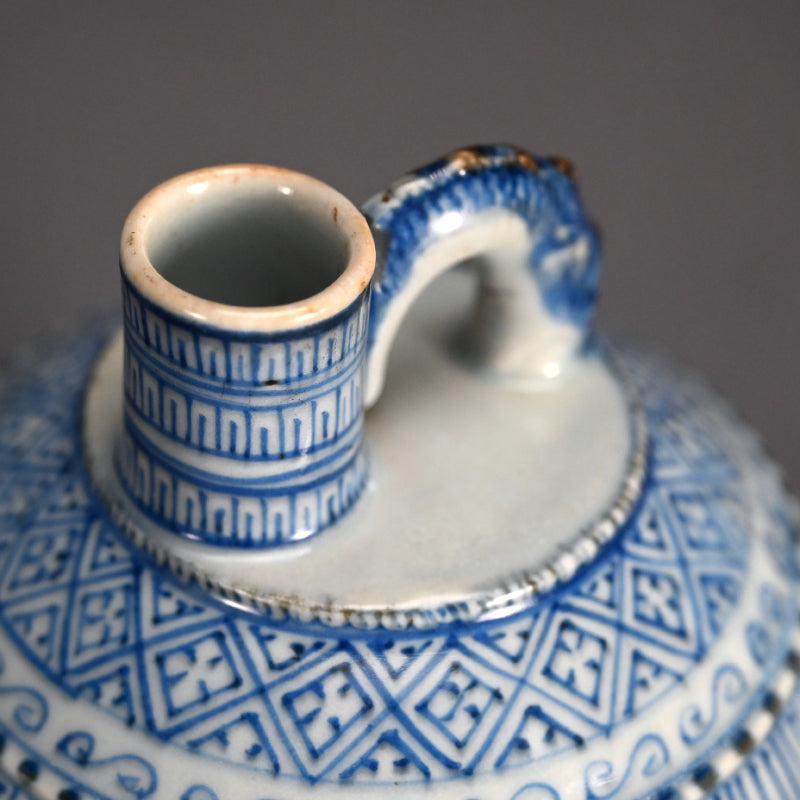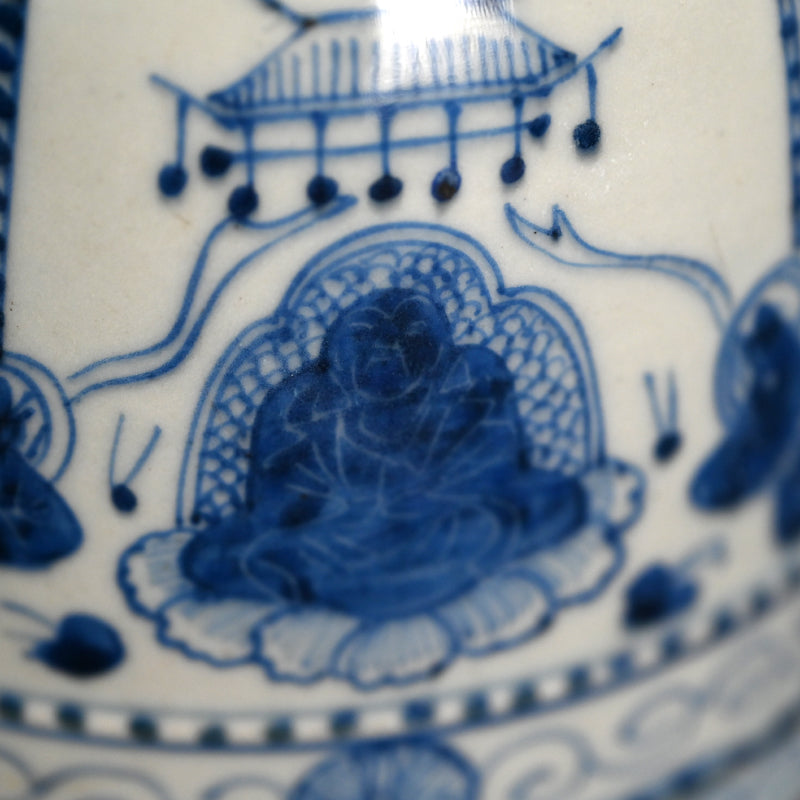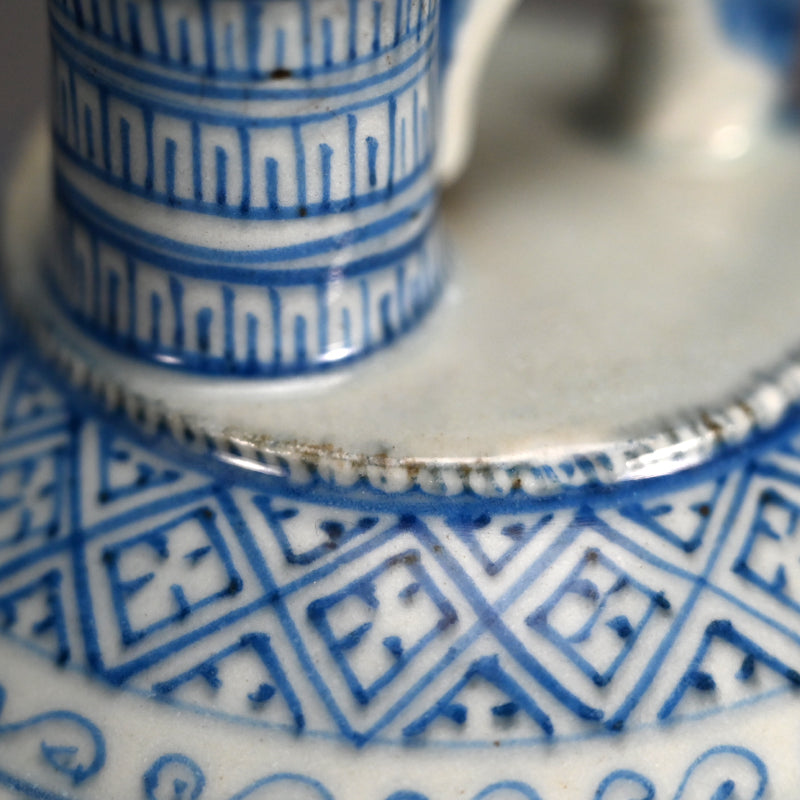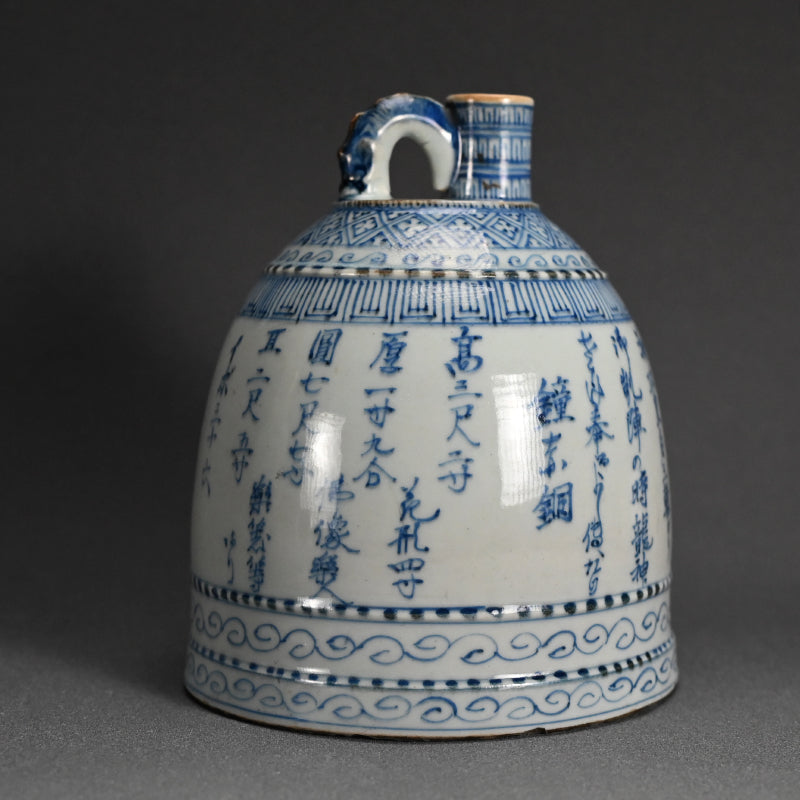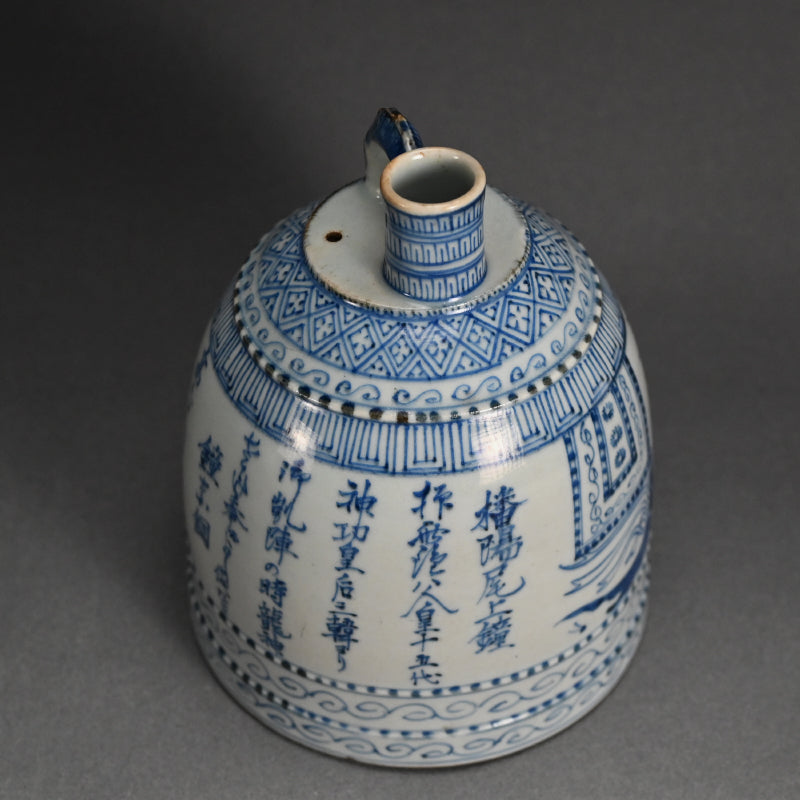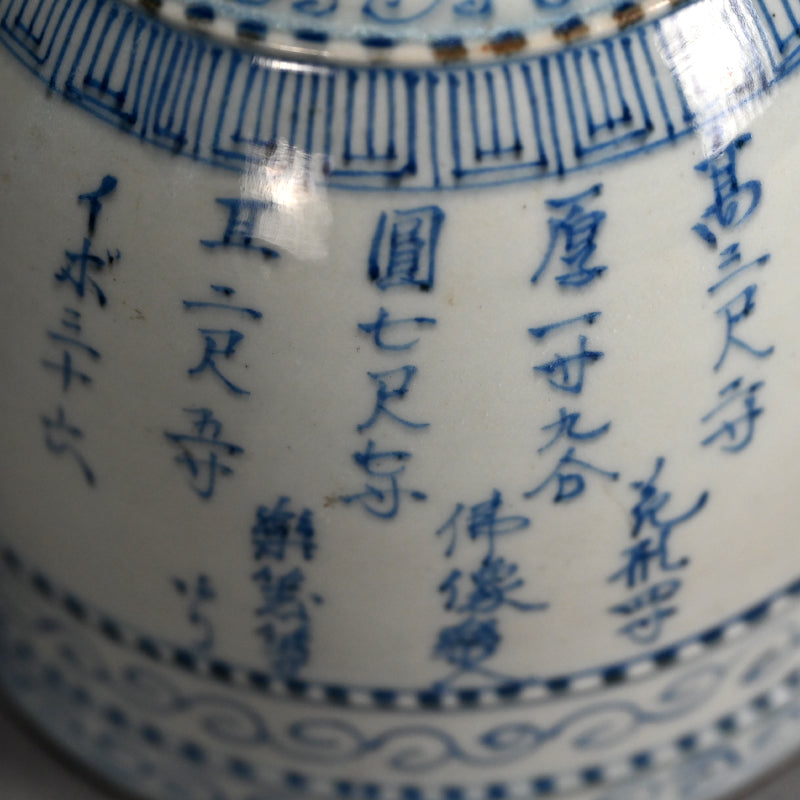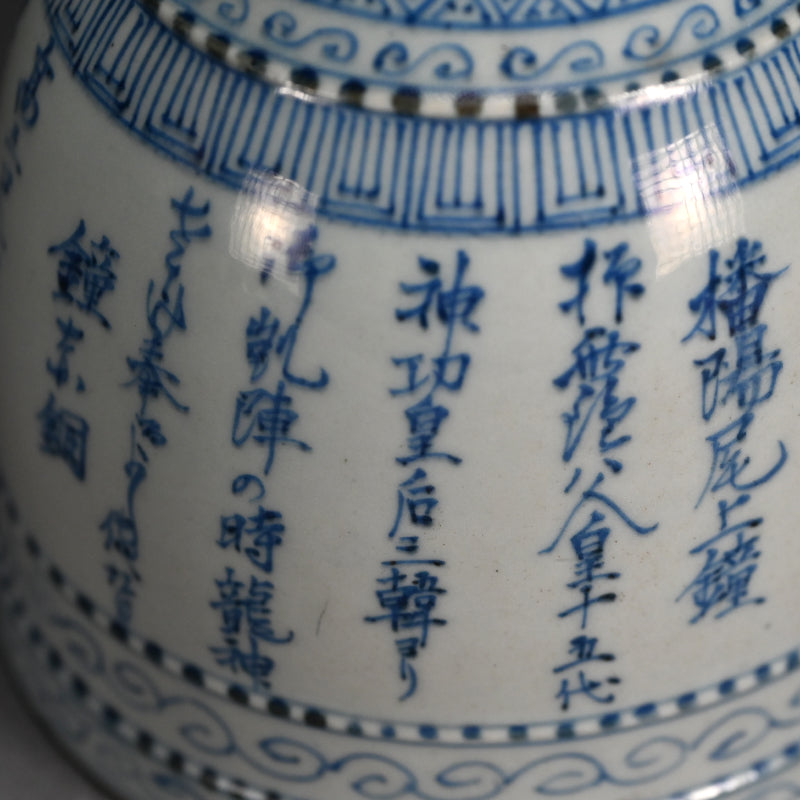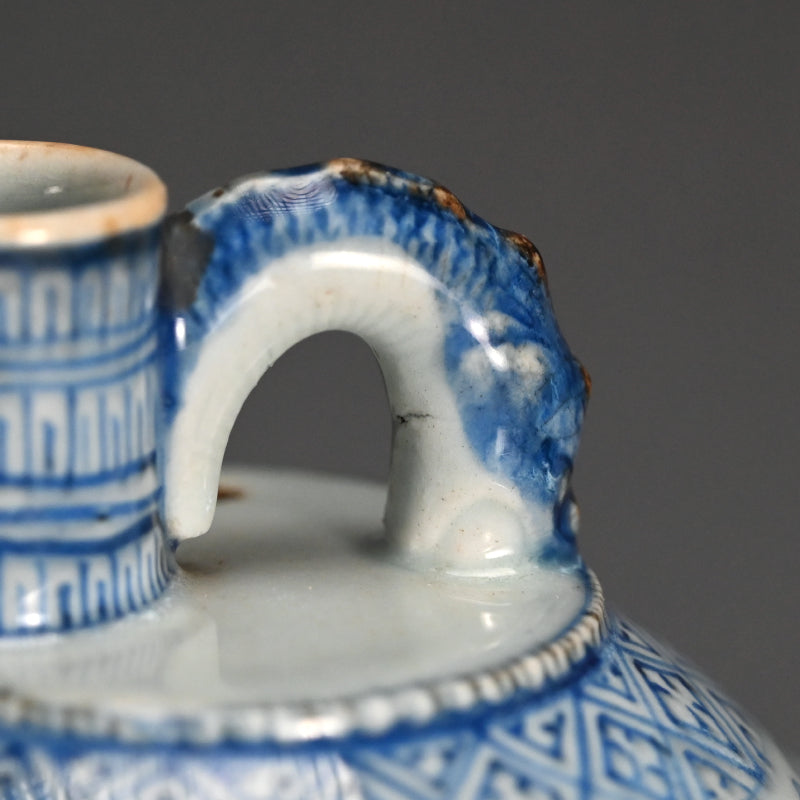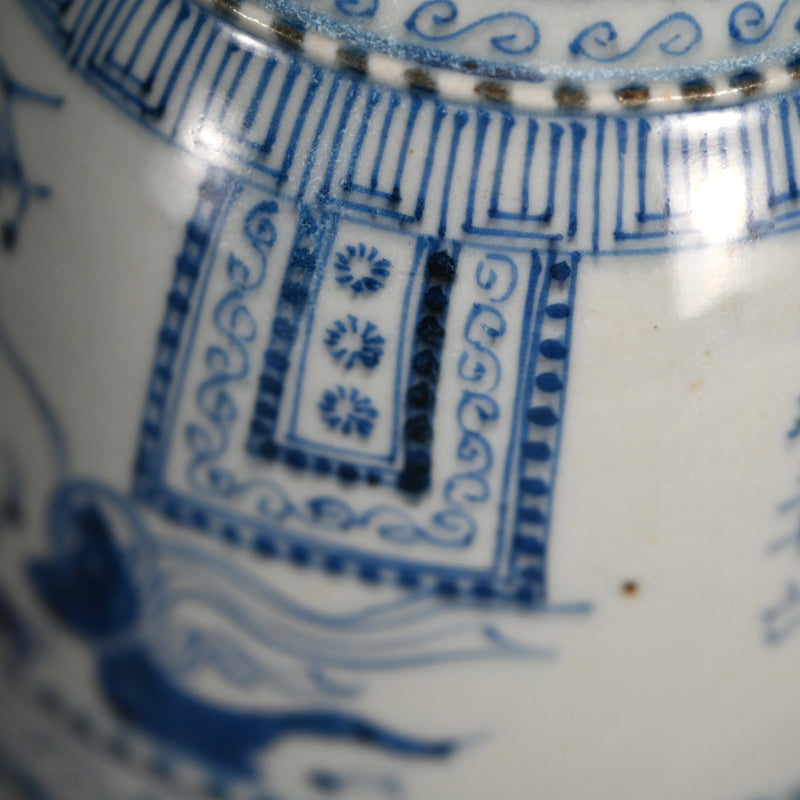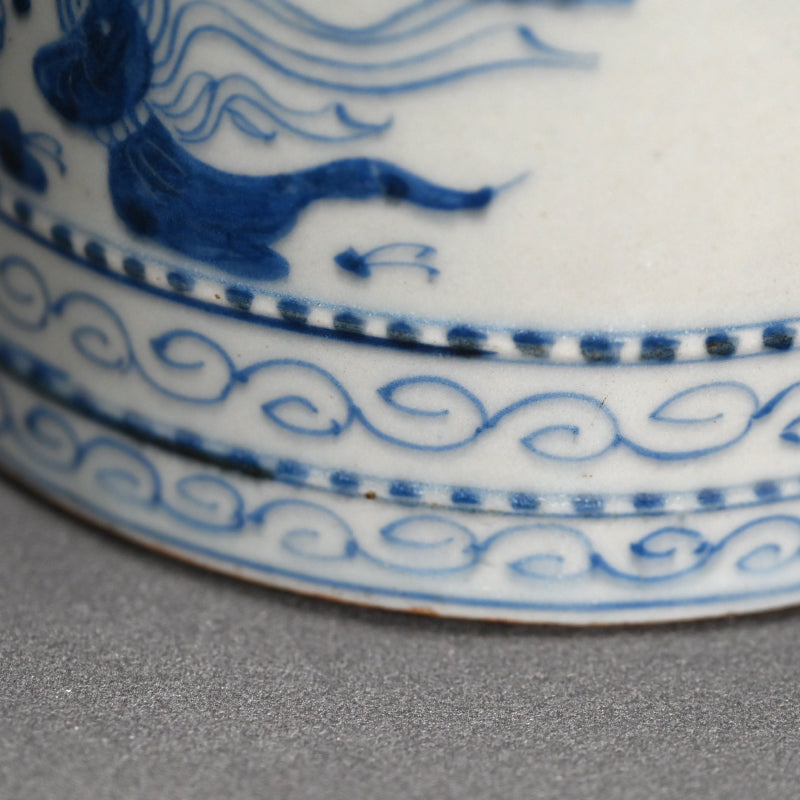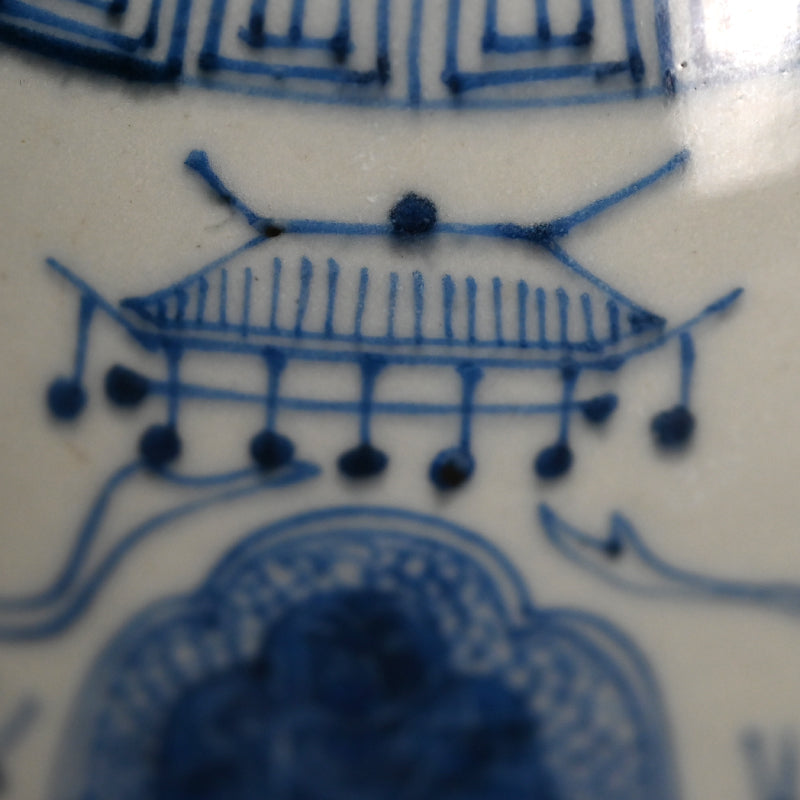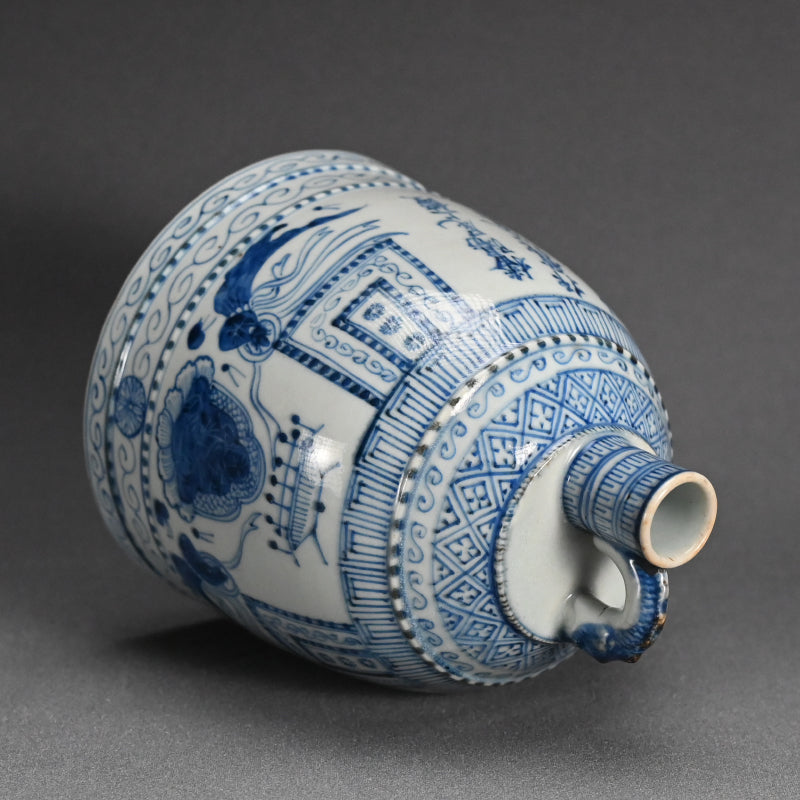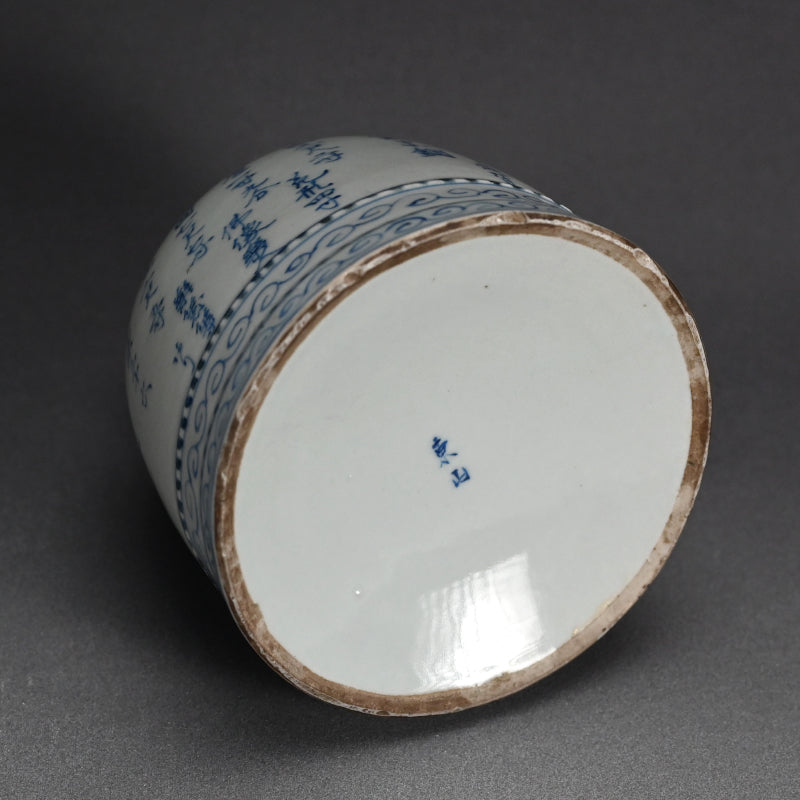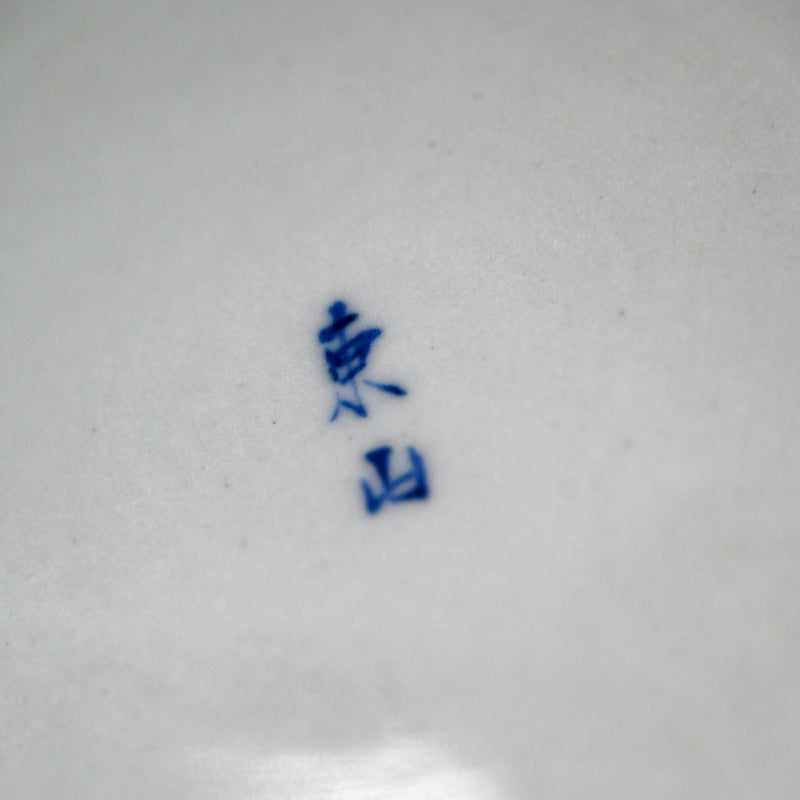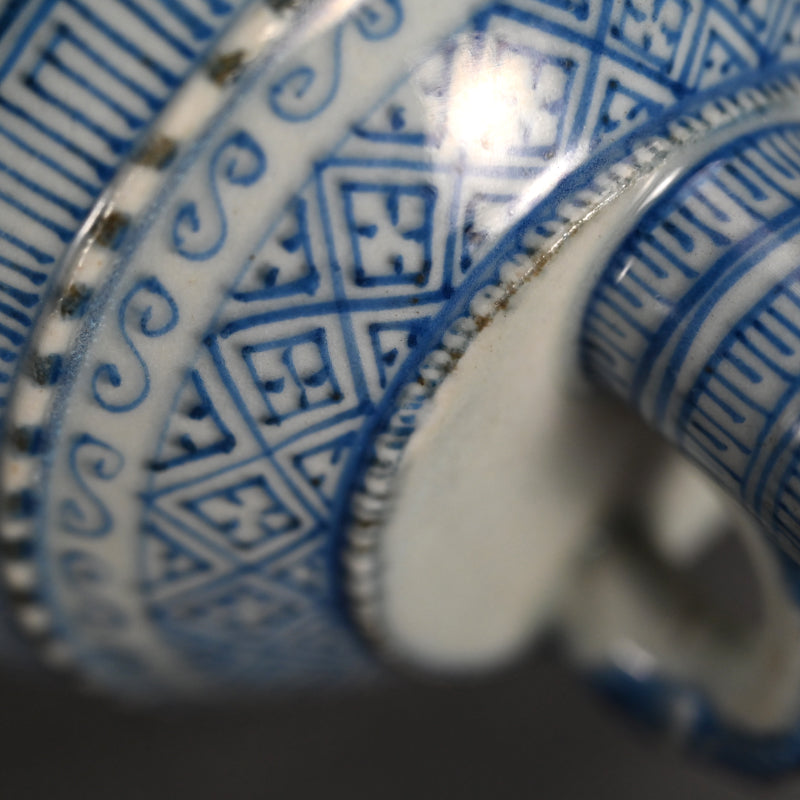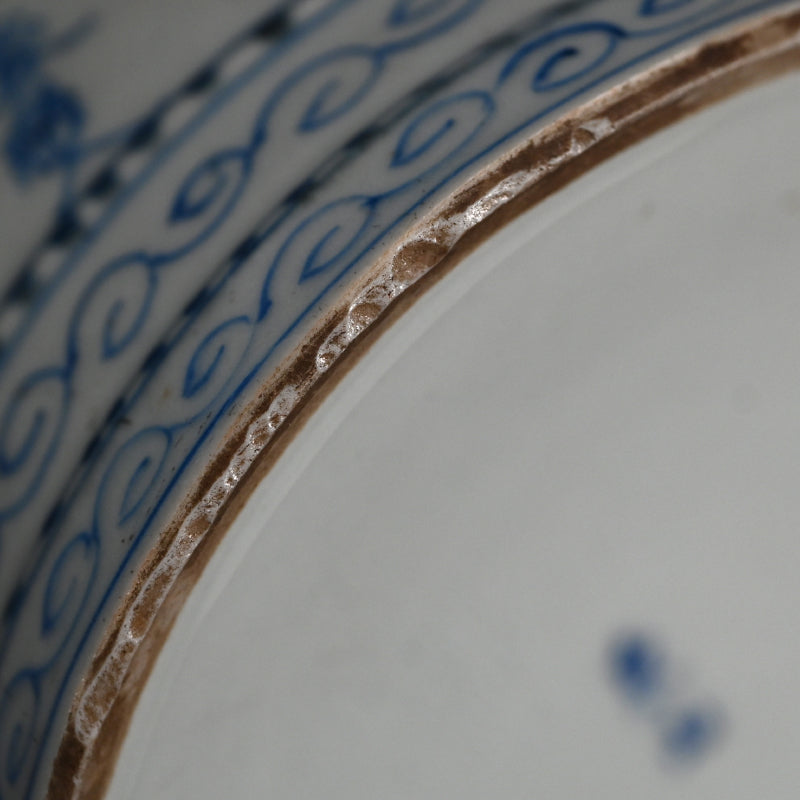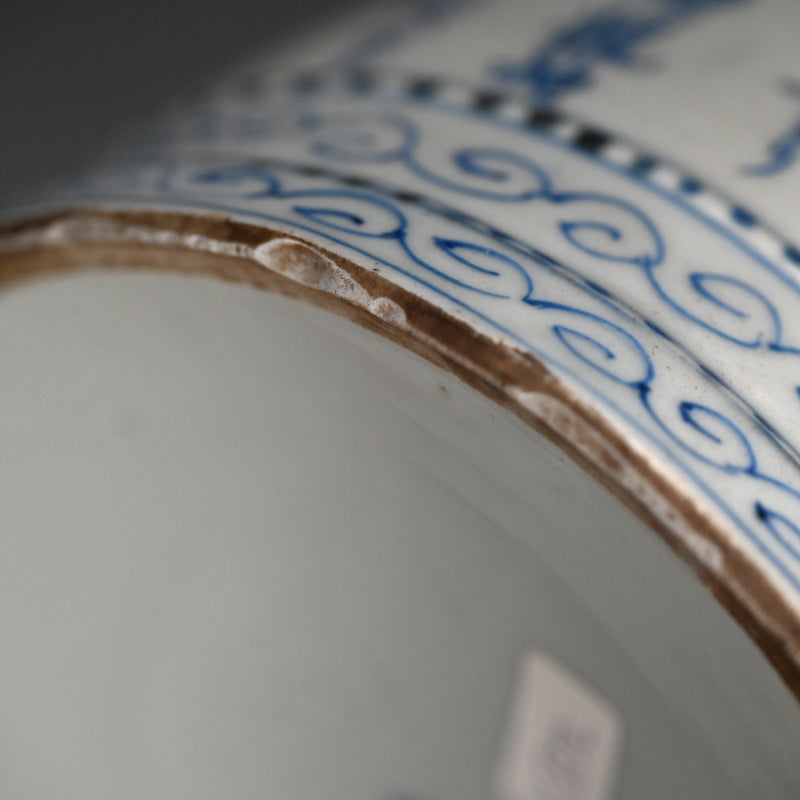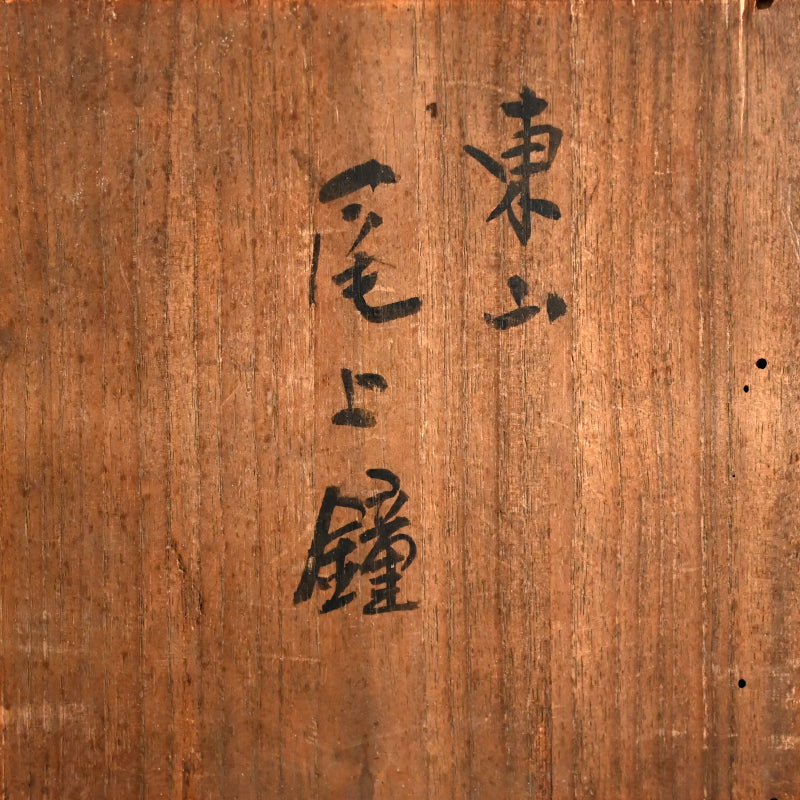1
/
of
21
Tozan Yaki Blue & White Porcelain Flagon from Himeiji ー東山 尾上鐘
Tozan Yaki Blue & White Porcelain Flagon from Himeiji ー東山 尾上鐘
Item Code: K802
Regular price
¥197,300 JPY
Regular price
Sale price
¥197,300 JPY
Unit price
/
per
Tax included.
Couldn't load pickup availability
A spectacular bell shaped bottle decorated in underglaze blue with scrolling verse and bearing the Tozan Mark of the Himeiji Potteries beneath. A very rare find, this is representing the bell of Onoe Shrine in Kakogawa City, Hyogo Prefecture. It is 16 cm (6-1/4 inches) diameter, 19 cm (7-1/2 inches) tall and in overall excellent condition, with a minor chip to the base soft raw porcelain around the foot ring typical of use.
Tozan-yaki was a type of porcelain produced from the mid-Edo period to the early Meiji period. Originating in Higashiyama Village, it was influenced by Arita-style porcelain. The first kiln was built east of Kōzen-ji Temple in Higashiyama Village, which is why it was also called Kōzenji-yaki. Later, when the kiln was relocated near Himeji Castle as the official pottery workshop (goyōgama) of the Himeji domain's ruling Sakai family, it became known as Himeji-yaki.
This Buddhist temple bell is located at Onoe Shrine, which enshrines Sumiyoshi Daimyōjin, a deity widely revered as the god of the sea. It has been mentioned in works such as the Senzai Wakashū (Collection of a Thousand Years) and the Noh play Takasago. It is said that Empress Jingū brought this bell back upon her triumphant return from the conquest of the Three Kingdoms of Korea. However, in reality, it was made during the Silla dynasty and is approximately 1,100 years old. According to the Harima Kagami and local tradition, this bell was stolen by pirates in 1468 (Ōnin 2) and thrown into the sea near Cape Ashizuri in present-day Kōchi Prefecture. Later, local fishermen retrieved it and dedicated it to Kōyasan. However, whenever the bell was struck, it was said to sound like "Onoe e, inō" ("Let’s go back to Onoe"), leading to its return to Onoe Shrine.
The bell stands at a height of three shaku two sun (about 123.5 cm), with a circumference of seven shaku seven sun (about 297 cm), a mouth diameter of one shaku nine sun (about 73.5 cm), and a thickness of one sun nine bu (about 7 cm). It features wide bands at the top and bottom, with generously spaced nyūrō (protruding knobs), but lacks the traditional kesatatsu (diagonal sash pattern). Instead, a single figure of a seated Buddha is carved in relief upon a lotus pedestal, with a canopy and small musical instruments floating above its head. Celestial maidens are depicted gracefully fluttering their robes across the upper sides of the bell, creating an elegant scene. Surrounding the Buddha, two celestial beings descend from the sky, playing music in devotion. This exquisite relief is particularly striking in its depiction of six musical instruments appearing to float in midair, as if producing ethereal sounds.
Tozan-yaki was a type of porcelain produced from the mid-Edo period to the early Meiji period. Originating in Higashiyama Village, it was influenced by Arita-style porcelain. The first kiln was built east of Kōzen-ji Temple in Higashiyama Village, which is why it was also called Kōzenji-yaki. Later, when the kiln was relocated near Himeji Castle as the official pottery workshop (goyōgama) of the Himeji domain's ruling Sakai family, it became known as Himeji-yaki.
This Buddhist temple bell is located at Onoe Shrine, which enshrines Sumiyoshi Daimyōjin, a deity widely revered as the god of the sea. It has been mentioned in works such as the Senzai Wakashū (Collection of a Thousand Years) and the Noh play Takasago. It is said that Empress Jingū brought this bell back upon her triumphant return from the conquest of the Three Kingdoms of Korea. However, in reality, it was made during the Silla dynasty and is approximately 1,100 years old. According to the Harima Kagami and local tradition, this bell was stolen by pirates in 1468 (Ōnin 2) and thrown into the sea near Cape Ashizuri in present-day Kōchi Prefecture. Later, local fishermen retrieved it and dedicated it to Kōyasan. However, whenever the bell was struck, it was said to sound like "Onoe e, inō" ("Let’s go back to Onoe"), leading to its return to Onoe Shrine.
The bell stands at a height of three shaku two sun (about 123.5 cm), with a circumference of seven shaku seven sun (about 297 cm), a mouth diameter of one shaku nine sun (about 73.5 cm), and a thickness of one sun nine bu (about 7 cm). It features wide bands at the top and bottom, with generously spaced nyūrō (protruding knobs), but lacks the traditional kesatatsu (diagonal sash pattern). Instead, a single figure of a seated Buddha is carved in relief upon a lotus pedestal, with a canopy and small musical instruments floating above its head. Celestial maidens are depicted gracefully fluttering their robes across the upper sides of the bell, creating an elegant scene. Surrounding the Buddha, two celestial beings descend from the sky, playing music in devotion. This exquisite relief is particularly striking in its depiction of six musical instruments appearing to float in midair, as if producing ethereal sounds.
Share
